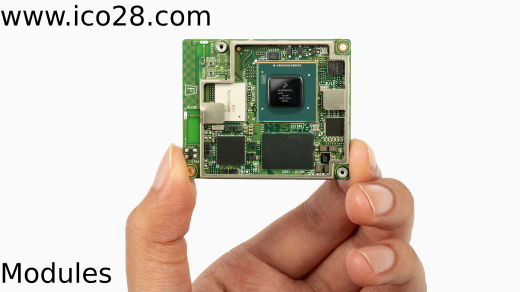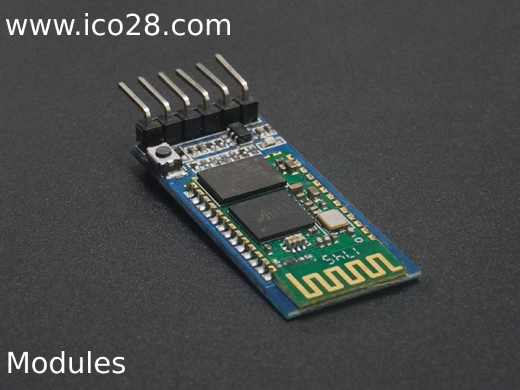I. Introduction
A. Definition of modules and their significance in programming.
Modules are fundamental building elements in programming that allow code to be logically and repeatedly organized. Modules are essentially groups of linked variables, classes, and functions that together provide a single functional unit inside a larger program. Their significance resides in encouraging code organization, making maintenance easier, and fostering code reuse within projects. Developers can more efficiently manage complexity, increase team member participation, and improve readability by segmenting a program into modular components. To put it simply, modules are essential to the advancement of sound software engineering techniques and the maintenance and scalability of software systems.
B. Brief overview of how modules contribute to code organization and reusability.
The ability of modules to divide programs into more digestible chunks helps developers organize code much better. Developers are free to concentrate on individual components without getting sidetracked by the complexity of the entire code base because each module contains a single aspect of functionality. Additionally, by offering a way to share common functionality across various program components or even across numerous projects, modules promote code reuse. This reuse encourages uniformity and standards throughout the code base in addition to reducing code duplication. Furthermore, developers can utilize pre-existing code by simply importing modules into other modules or programs, saving them from having to start from scratch. Generally speaking, modules serve as the foundation of the modular programming paradigm, allowing programmers to create software systems that are reliable, scalable, and maintainable.

II. Types of Modules
Modules can be grouped in various ways based on their function, context, or goal. Here are a few different kinds of modules:
1. Software Modules:
Library Modules: are collections of operations or procedures that a program can utilize to carry out particular duties. The standard library of Python, which includes modules like “os,” “math,” and “random,” is one example.
Framework Modules: they are modules made to function with a particular software framework. For instance, modules from web development frameworks like Flask or Django assist with activities like template generation, database interaction, and routing.
Plugin Modules: these allow users to dynamically add or remove features from a software application, extending its capabilities. Browser plug-ins and add-on modules for programs like WordPress are two examples.
Kernel Modules: these are sections of code that may be dynamically loaded into and unloaded from the kernel in order to increase the functionality of the operating system. Device drivers are one example.
2. Hardware Modules:
Integrated Circuits (ICs): tiny integrated circuits found within chips. They are capable of carrying out many different tasks, including signal processing, memory, and logic gates.
Peripheral Modules: hardware elements like sensors, actuators, or communication modules (like Bluetooth and Wi-Fi) that can be coupled to a computer or microcontroller to perform extra tasks.
Expansion Modules: extra cards or modules that increase a system’s or device’s capacity. Computer sound cards, network interface cards (NICs), and graphics cards are a few examples.
3. Educational Modules:
Learning Modules: subject-specific teaching materials arranged into units to help with learning. Lesson plans, presentations, exercises, and evaluations are a few examples of them.
Training Modules: are comparable to learning modules but concentrate on particular abilities needed to finish a task or career. They frequently contain practical exercises, simulations, and step-by-step directions.
4. Engineering Modules:
Design Modules: parts or subsystems of a bigger engineering project that are intended to carry out particular tasks. For instance, structural elements like beams or columns may be considered modules in the field of civil engineering.
Simulation Modules: computer programs designed to mimic how systems or procedures would behave. Software packages like MATLAB/Simulink or standalone simulation programs could have them.
5. Administrative Modules:
Management Modules: software tools or parts utilized for management functions, including enterprise resource planning (ERP), project management, and customer relationship management (CRM).
Monitoring Modules: parts that keep track of and report on system, network, or application performance or status. Network monitoring tools and server management software monitoring modules are two examples.
6. Biological Modules:
Genetic Modules: segments of DNA that encode specific functions or traits in organisms. They can include genes, regulatory sequences, or entire operons.
Cellular Modules: functional units within cells that carry out particular functions, such ribosomes for protein synthesis or mitochondria for energy production.
Organ Modules: specialized organs found in multicellular animals that carry out certain tasks, such the heart’s role in breathing or the lungs’ in circulation.

III. Application of Modules
Each module is tailored to its intended purpose and can be used in a wide range of subjects and circumstances. The following are a few of the most popular uses of modules across several domains:
1. Software Development:
Code Organization: to manage and maintain large software projects more easily, code is organized into logical chunks using modules.
Code Reusability: libraries and framework modules make it possible to reuse code across several projects, which reduces development time and effort.
Modularity: dividing large, complex systems into smaller, easier-to-manage modules promotes modularity, which frees engineers to concentrate on specific parts of the system without having to worry about the entire thing.
2. Web Development:
Backend Development: pre-built components for creating online applications, like routing, authentication, and database interaction, are provided by framework modules like Django, Express.js, or Ruby on Rails.
Frontend Development: By breaking up front-end code into reusable components, JavaScript modules (such as ES6 modules) aid to improve maintainability and scalability.
3. Hardware Design:
Integrated Circuits (ICs): IC modules are frequently used in electronic hardware design to implement a variety of functionalities (such as memory chips, communication interfaces, and microcontrollers).
Modular Hardware Systems: common in consumer electronics, automotive, and aerospace industries, modular systems allow for easy component replacement or upgrade without having to redesign the entire system. This is made possible by hardware modules.
4. Education and Training:
E-learning Modules: learning modules, which include text, multimedia, quizzes, and exercises, are used by educational institutions and digital platforms to offer course information in an organized manner.
Training Modules: training modules are used by businesses for professional certification programs, compliance training, skill development, and onboarding.
5. Engineering and Simulation:
Design Modules: engineers utilize these programs, such as computer-aided design (CAD) modules for modeling mechanical parts or simulation modules for electrical circuits, to construct and analyze systems or components.
Simulation Modules: these software modules replicate real-world situations and aid in product development, testing, and optimization across various industries, including manufacturing, aerospace, and automotive.
6. Biotechnology and Bioinformatics:
Genomic Modules: sequence alignment, gene prediction, and protein structure prediction modules are among the modules that bioinformatics tools utilize to analyze genomic data.
Biological Pathways: Modules stand for networks of interacting molecules (such as proteins and metabolites) that are part of disease pathways, cellular processes, or medication interactions.
7. Administrative and Management:
Project Management: management components facilitate task delegation, resource allocation, progress tracking, and team communication.
Enterprise Resource Planning (ERP): Modules from ERP systems are used to handle many business operations, such as supply chain, customer relationship management, finance, and human resources.

VI. Conclusion
To add up, modules are abecedarian structure blocks across a variety of fields that help with software development, tackle design, education, engineering, biotechnology, and operation by promoting association, reusability, and modularity. Modules frequently have a significant impact on perfecting productivity, scalability, and maintainability across colorful operations, which enhances education, technology, and organizational operation.
